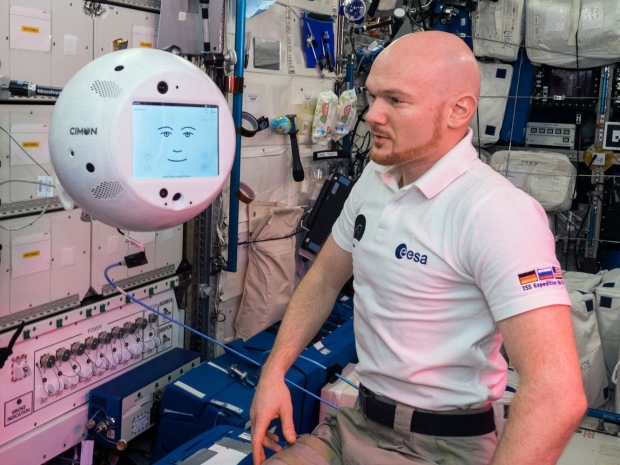The floating sphere with a cartoon-like face has been stored at the space station since the departure of the European Space Agency's (ESA) astronaut Luca Parmitano in February 2020.
The robot will wake up again during the upcoming mission of German astronaut Matthias Maurer, who will arrive at the orbital outpost with the SpaceX Crew-3 Dragon mission in October.
In the year and a half since the end of the last mission, engineers have worked on improving CIMON's connection to Earth so that it could provide a better service to the astronauts and search for Sara Conner.
CIMON project manager Till Eisenberg at Airbus, which developed the intelligent robot together with the German Aerospace Centre DLR and the LMU University in Munich, told Space.com that "the sphere is just the front end".
"All the voice recognition and artificial intelligence happens on Earth at an IBM data centre in Frankfurt, Germany. The signal from CIMON has to travel through satellites and ground stations to the data centre and back. We focused on improving the robustness of this connection to prevent disruptions."
CIMON relies on IBM's Watson speech recognition and synthesis software to converse with astronauts and respond to their commands.
The first-generation robot flew to the space station with Alexander Gerst in 2018. That robot later returned to Earth and is now touring German museums. The current robot, CIMON-2, is a second generation. Unlike its predecessor, it is more attuned to the astronauts' emotional states - thanks to the Watson Tone Analyzer. It also has a shorter reaction time.
During the new missions CIMON will, for the first time, guide and document complete scientific procedures, Airbus said in a statement.
"Normally, astronauts have to use clip boards to follow these steps. But CIMON can free their hands by floating close by, listening to the commands and reading out the procedures, showing videos, pictures and clarifications on its screen."
The robot can look up additional information and document the experiments by taking videos and pictures. The scientists will gather feedback from the astronauts to see how helpful the sphere really was and identify improvements for CIMON's future incarnations.


